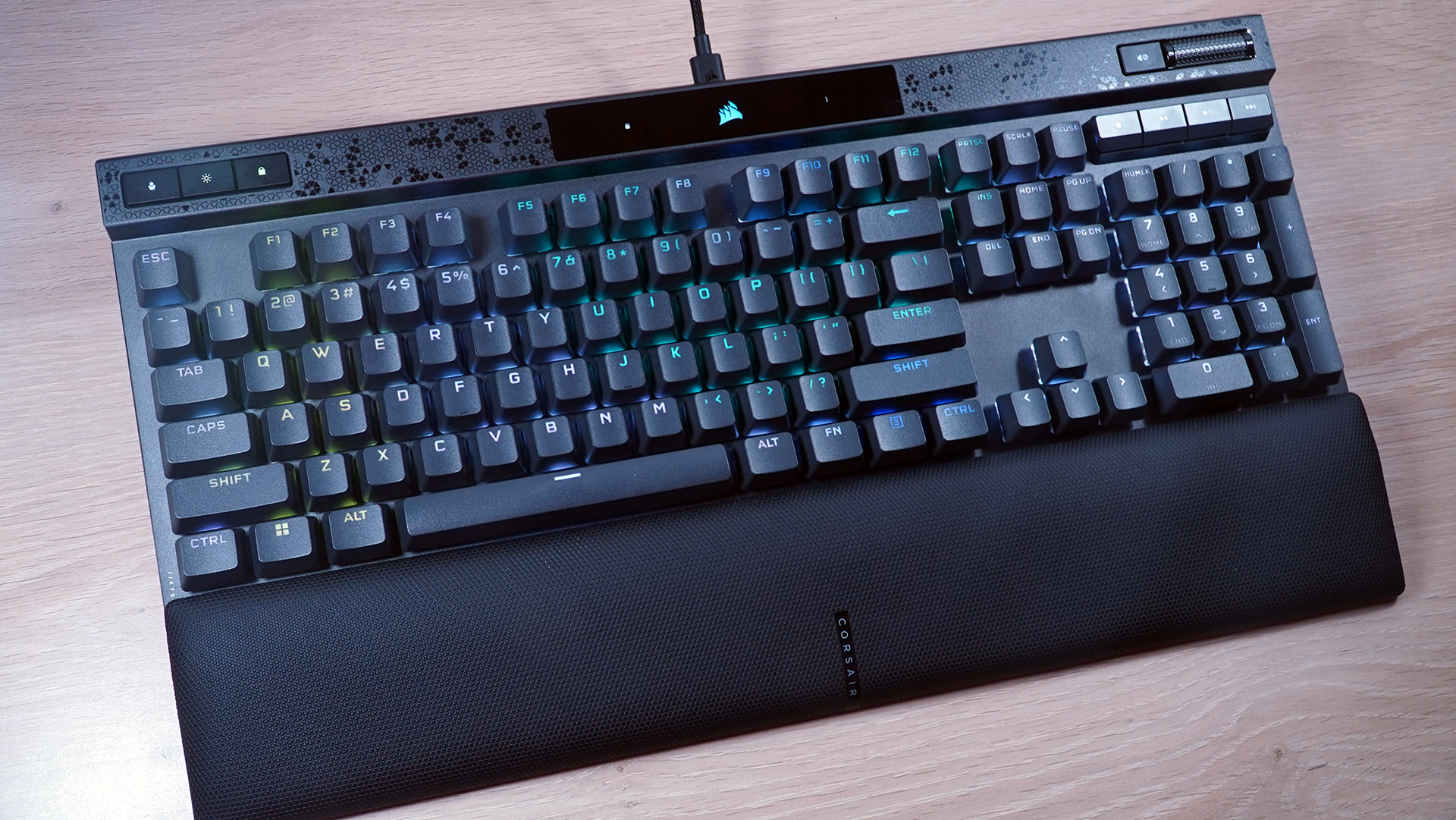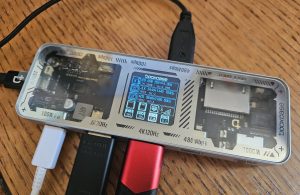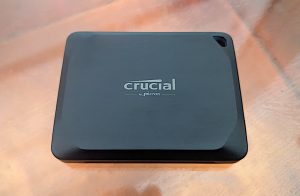

Mechanical keyboards are all over the place, especially in video gaming circles. It’s getting hard for a business to stand apart, which is most likely why some have actually relied on tossing every possible feature and trick at the wall to see what sticks. Corsair is taking a more concentrated approach with the K70 Max. It’s the business’s first keyboard with “magnetic MGX” switches, which allow for variable actuation points and double designated functions on every crucial press.
That alone would deserve a look, if not an automatic suggestion. The K70 Max also stacks on a lot of gamer-friendly, high-end features, like a complete 100% design, PBT keycaps, a brand-new moistened body, a super-comfy wrist rest, and wise media controls. And it does all this without being overpriced compared to the competition … though in this highly specific niche, there isn’t that much competition to be had.
All that integrated makes this keyboard a suggestion, albeit a conditional one. If you’re wowed at the idea of variable actuation for crucial switches and 2 functions on the same essential press (and you’re willing to pay for it), then the K70 Max is the keyboard to choose.
Corsair K70 Max RGB style
The K70 Max RGB has a traditional player keyboard look. Additional media controls are above the number pad, plus a volume wheel and profile/lighting/Win lock buttons on an even greater strip, which it shares with Corsair’s glossy strip of LED indicators for num lock, mute, et cetera.
The wrist rest should have specific praise. I’m of the mind that any keyboard in this price variety needs to consist of one, and Corsair didn’t cut corners here. Its somewhat rubbery triangle texture grips my palms while the cushy foam beneath is very luxurious, and the entire thing just sits at the perfect spot to make gaming or typing for hours on end comfortable. It’s kept in location with magnets and a couple of foam pads, suggesting it’s both snug in place and simple to remove if you should want to. Just aces all around, and a notable improvement over last year’s model.
The sides of the keyboard beneath the sandblasted aluminum deck are bare, while the top has a “competition mode” toggle beside the removable USB-C cable. This switch will disable and lock any user modifications or macros (including lighting) and fix it in place with a little plastic bracket. I have not been to any PC gaming competitions recently, so I can’t speak with whether that’ll satisfy any sticklers for competition guidelines.
There’s a bit more thoughtful design going on underneath the keyboard, too. In addition to sturdy dual-stage feet– a requirement for this three-pound chonker– there are angled grooves for rerouting the USB-C cable, likewise seen on the K70 Pro. The method the switch LEDs shine through the clear plastic on the bottom is very cool, even though you’ll never ever see it while in fact utilizing this thing. It revives fond memories of an Atomic Purple Game Boy Color.
Other significant physical features include nice, thick PBT keycaps (an outright must-have at this cost point), which are a little less “rough” than some similar examples; double-layer internal foam for sound dampening; and 8,000 Hz ballot for the superhuman esports types. The key design and switch stems are standard, so this board needs to deal with any custom keycaps, but the fancy switches do not permit hot-swap sockets. Speaking of which …
What about the K70 Max RGB’s magnetic switches?
Alright, it’s time to get down and unclean with this board’s defining feature: the “Magnetic MGX” switches. They feel smooth and gratifying if a little more “rattley” than normal switches, due to the fact that they lack an enhanced box-style stem.
The magic in these switches is that the actuation point can be set magnetically, anywhere in between.4 mm and 3.6 mm. And this setting can be personalized for every single switch on the board. For example, if you want your WASD directional keys to react to a feathery tap however you prefer a tough press on “G” for grenade, that’s simple to accomplish.
On top of tailoring the force needed for each specific secret, you can set some (or all) secrets to double actions. A soft press triggers one function, a difficult press activates another, once again, both of which can be set to customized actuation points. For example, you can press that “G” button gently to throw a flash grenade or roughly to throw a frag grenade (presuming the video game will let you bind those actions separately).
Make no error, this is a deep gamer bunny hole to decrease. In order to use this feature successfully you’ll need to establish a customized profile for each video game, and most likely do a great deal of really picky testing to see which one works best for you. If you’re not prepared to invest actual hours checking out different setups, the several actuation point function most likely isn’t that useful for you. Ditto for the “Rapid Trigger” function, which Corsair didn’t have ready in time for this evaluation. Fast Trigger enables an instant reset function as quickly as the keyboard identifies either downward or upward motion on the switch, perfect for crazy-fast strafing.
Corsair’s iCue software application
In order to set any of these functions, you’ll require to dive into the iCue software application, under the Key Actuations menu. And you can set up the very same custom activation and reset on a second function, generally the “more difficult” setting, for each secret.
iCue deals with a staggering amount of info and settings, so it can be forgiven for being less than easy to use. I discovered that having to move between 2 different menus to set several actuation points, and the real functions that they set off, rather tiring. And that’s on top of a solid 20 minutes of poking around to see how this procedure actually works. The software application likewise has the usual tools for handling lighting effects with plugins readily available for Lenovo, Asus, MSI, and Nvidia hardware (there are even 2 different zones just for the Corsair logo on top– good sorrow) and numerous hardware toggles.
Again, this probably won’t hinder anyone who’s actually interested in the K70 Max for the variable actuation function. And if all you truly want to do is play with a little custom-made lighting and set all your secrets to the very same light or difficult actuation point, it’s simple enough to do.
How does the K70 Max RGB compare in value?
Keyboards with user-selectable actuation points, often going by an “analog” shorthand, are still extremely thin on the ground. (Technically this uses optical switches rather than magnetic, but it offers the same custom-made actuation and double actuation functions.).
Not having actually checked the other choices in this section, I’ll need to draw on pure specifications. Corsair’s $220 K70 Max has Razer beat in pure hardware capability, as its custom actuation settings start at just.4 mm, versus a much deeper 1.5 mm on those optical switches. I’m prepared to knock the Wooting Two HE out of the value argument due to its total lack of a wrist rest or any media controls. And I’m likely to provide the K70 more props for its comfortable wrist rest than the difficult plastic on the SteelSeries.
The SteelSeries likewise cheaps out a little by having adjustable actuation only on its primary alphanumeric crucial section. If you’re prepared to spend $200 on a keyboard with custom-made actuation keys, then I don’t think a $5 discount rate will sway you, or a $50 premium will turn you off.
When again I need to worry: “Analog” keyboards are an incredibly niche item, and one that only the most requiring, tweak-happy gamers will have the ability to use completely. If you’re a fan of Corsair’s keyboard designs and functions (and do not mind the body ping), the routine K70 Pro will serve you just fine at a $60 discount with a range of Cherry changes to pick from. The only thing you’re losing out on is that new padded wrist rest.
If you comprehend the appeal of the magnetic switches, and you desire a keyboard that’s filled to the brim with other features, the K70 Max will do well. Not only does it debut the custom actuation function remarkably well in Corsair’s line (complicated iCue software application regardless of), it likewise surpasses the previous K70 in small but meaningful ways, with a quieter body and a super-comfy wrist rest.








